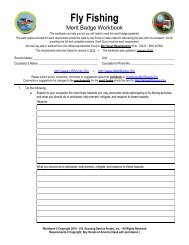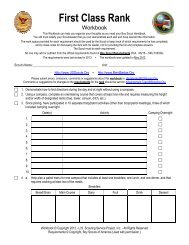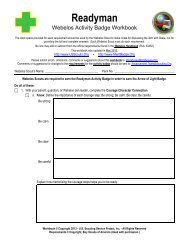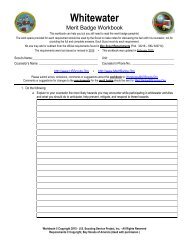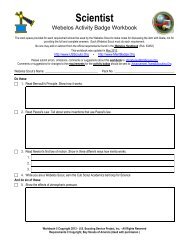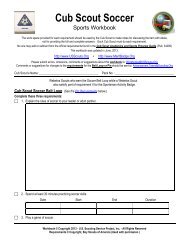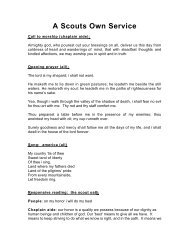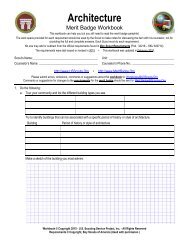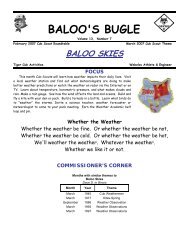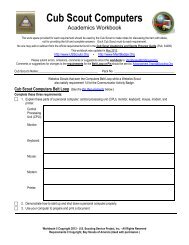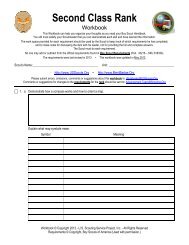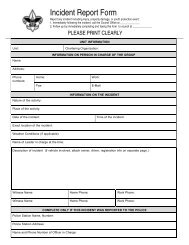scouts-l ---------- cold weather camping & klondike derbys - Clipart
scouts-l ---------- cold weather camping & klondike derbys - Clipart
scouts-l ---------- cold weather camping & klondike derbys - Clipart
You also want an ePaper? Increase the reach of your titles
YUMPU automatically turns print PDFs into web optimized ePapers that Google loves.
BTW, I think a vapor barrier system also works very well for sleeping inextremely <strong>cold</strong> <strong>weather</strong>.******************* Follow-up Message *****************I've tested various clothing options when shoveling snow, walking the dog,sledding with the kids, or otherwise close to home in a <strong>cold</strong> setting. Daytrips are also good time to try something new. This enables me tofine-tune the layering without risking myself on a backcountry trip withunfamiliar gear. Your proposed approach sounds okay to me [....as anexperiment I might try a latex glove on one hand under my mittens and aplastic bag on one foot under my sox and see if I notice a difference...].I've not used latex gloves myself, so can't really tell you from directexperience. The use of thin liner socks helps to avoid the feeling thatyour feet are swimming in sweat.I think my vapor barrier socks came from Campmor or maybe REI. They'revery thin neoprene rubber with a fairly comfortable fleece lining. Theyfit snugly so I don't have to worry about blisters. Again, I cautionagainst trying to cram extra socks (even VB type) into boots that are tootight. My winter boots have a felt liner (I always carry spares so theycan be changed out when wet). Ski boots, etc. are sized to fit over theappropriate socks. My <strong>cold</strong> <strong>weather</strong> clothing system consists of syntheticlong underwear (weight varies w/ expected activity level, temps, etc.),fleece or pile mid layers (vest, jacket, and pants, all w/ vent zippers),and Gore-Tex top layer (wind/water protection). I've moved to thesynthetics because of their performance to weight ratio. They also dryquicker (NOT NEAR THE FIRE!) and keep you warm even if wet. Rather than VBgloves, I usually wear thin thermax or polypro gloves, then either wool orfleece mittens, and some sort of outer shell mitten (Gore-Tex or similar).This gives flexibility in the layering and dexterity as required (tryworking a camera or surveying instrument with big mitts on). I recognizethat this type of outfit is pricey, but I think you can assemble a similaroutfit without spending a fortune. It's really a matter of what your needsand budget areThe sleeping bag liner is thin coated nylon. It's made by North Face andfits inside my mummy bag (700 fill goose down with a Gore-Tex outer layer).The theory here is to protect the down insulation from vapor on both theinside and outside and to allow any moisture that does get in to evaporatethrough the Gore-Tex (driven by the temp. differential). Needless to say,this arrangement is not on the cheap, nor is it appropriate for everyone(probably overkill for most folks, but vital in a snow cave orhigh-altitude bivouac). It is really warm and about as lightweight as I



